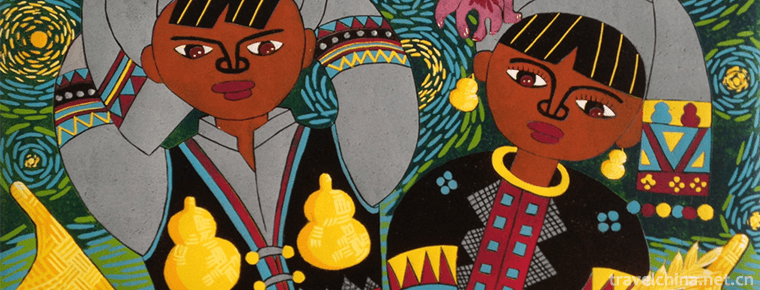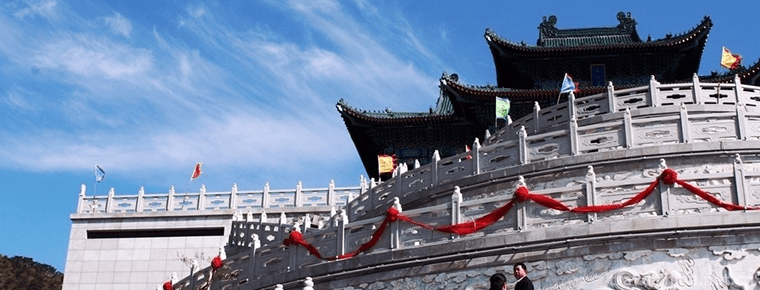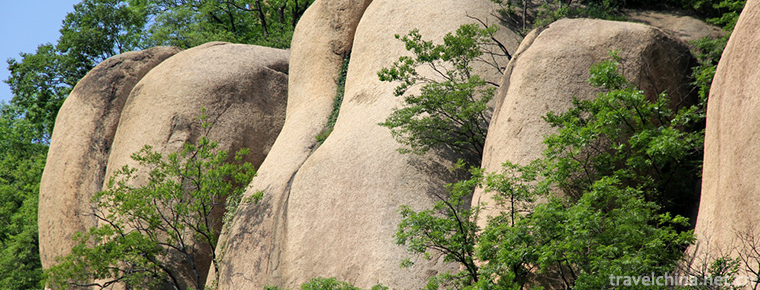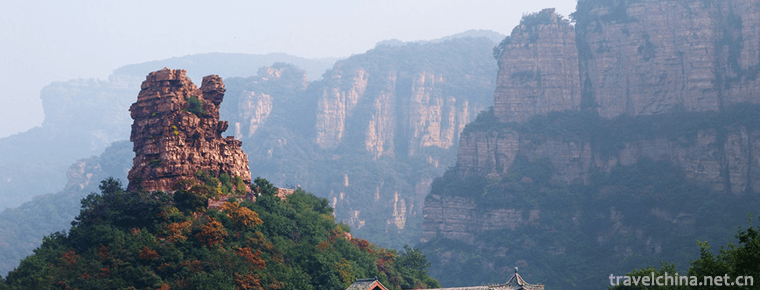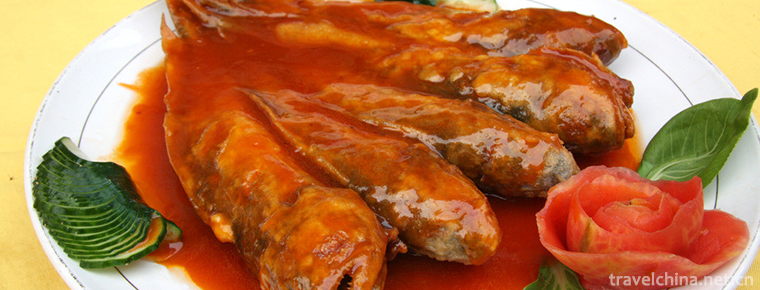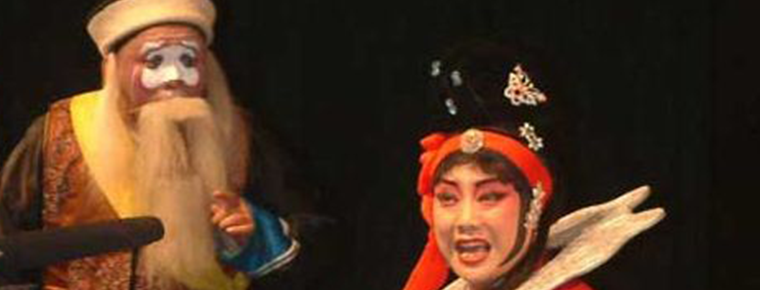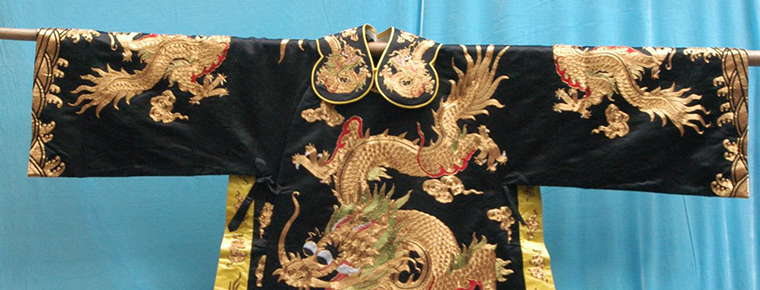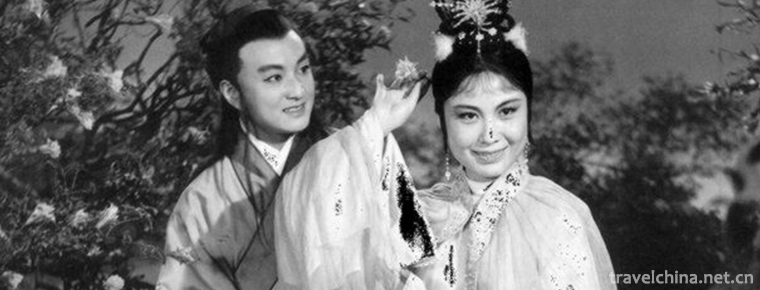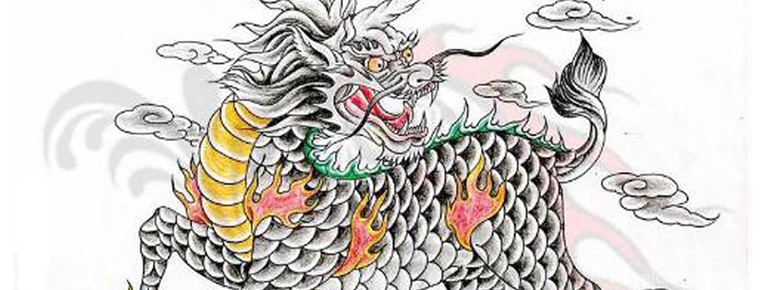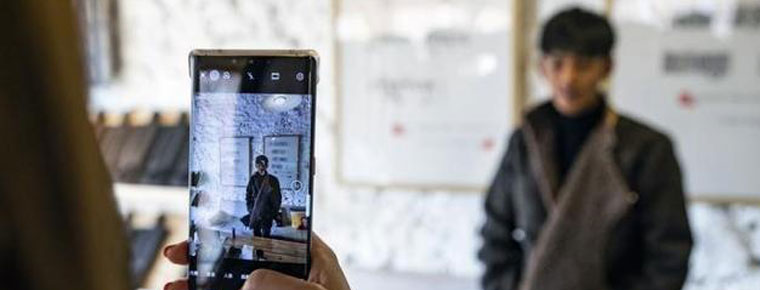Tibetan Gesar Painted Stone Carvings
Tibetan Gesar Painted Stone Carvings
Tibetan Gesar painted stone carvings belong to a relic of Chinese Tibetan Gesar culture. They are mainly distributed in Seda, Shiqu and Danba counties in Ganzi Tibetan Autonomous Prefecture of Sichuan Province. Gesar painted stone carvings in Seda County are the most representative. Situated in the northwest of Shu Province, Saida County is said to have been the residence of the Chang tribe of Lingguo and the home of famous Lingguo generals Nivandalya and Abanbu Yipanda. Therefore, the accumulation of Gesar culture is very deep and it has the reputation of "Gesar Art Town". The colored stone carving in Gesar is a pioneering work in the history of Tibetan art in China. It takes the core content of the heroic poetry history Gesar as its object of expression, combines exquisite stone carving skills with traditional painting, and reproduces the magnificent historical scene of King Gesar and his generals in the mountains who are benefiting the people, fearing evil and fighting bravely with their unique artistic style.
Historical origin
King Gesar, the epic hero, was born in 1038 and died in 1119. He was 81 years old. Gesar grew up poor and grazed in the present Ashu and Rolling Township because of his uncle's separation.
Mothers and children depend on each other. At the age of 16, the horse race elected the king and took the throne, so he moved into Senzhou Daze Zong, the capital of Lingguo, and married Zhum. In his lifetime, Gesar subdued demons and demons. In addition to riots, he fought in the South and in the north, uniting more than 150 tribes, and the Lingguo territory became unified. After Gesar's death, the Lingling onion family changed the capital Sen Zhou Daze Zong into a family temple, and its prestigious events and outstanding achievements showed successive generations.
In 1790 AD, the "King Gesar Temple" was built for Kanto by Xiongba XieSuya of Axu. After the Third Plenary Session of the Eleventh Central Committee, the memorial hall of King Gesar was rebuilt at its original site. Sixty-four beams and sixteen through-the-sky pillars form the main framework of the Gesar Memorial Hall, surrounded by walls. In the center of the Hall, the giant statue of King Gesar galloping horses is modeled, with 13 horse-fearing gods of war on its back, and twelve Buddhas of the Lingguo State on the left and right sides of the main wall. The two sides of the memorial hall are separated by soldiers like clouds and martyrs. The whole memorial hall is solemn and elegant, magnificent and magnificent. It really relies on the ancient Grand hall.
More than two centuries ago, Gesar painted stone carvings were bred in the area where Seda County is located. Since 2002, the painted stone carvings of Saida, Shiqu and Danbagesar in Ganzi Tibetan Autonomous Prefecture have been published one after another, which has attracted great attention from the academic circles. Experts agree that it not only provides a new way to inherit Gesar culture, but also fills in the gaps of Gesar culture in Tibetan stone carvings.
artistic characteristics
Gesar painted stone carvings in Seda County are mainly stored in Niduo Township, Seke Township, Nianlong Township and Ongda Township. Among them, the Gesar painted stone carvings in Wengda Village, Yage Village, Ongda Township, have the longest history, while the Gesar painted stone carvings in Puwu Village, Niduo Township, the best inheritance, the largest quantity and the largest scale, are the Gesar painted stone carvings in Puwu Village, Niduo Township. Their crafts are not only representative in Seda County It is also very typical in the areas where Gesar culture spreads throughout the country.
Niduo Township is located on the Niqu River in the northwest of Seda County, with an elevation of 4180 meters. The Gesar painted stone carvings here are stored on a large stone platform in the wall of the stone carvings around the White Pagoda of Puwu Temple in Puwu Village. Shitai is divided into five layers, with more than 1000 Gesar painted stone carvings, forming a pedigree. The part of the stone carving here is organized and carved by the famous monk Aya Lama of Puwu Village. It is magnificent in scale, magnificent in momentum, fine in knife and meticulous in material. It shows the past lives of King Lingsar and thirty generals and eighty generals of Lingguo. There are also 80 achievements of Tianzhu and hundreds of worshippers of civil and military gods in the stone carving. Whether from the integrity of the character pedigree or from the inheritance of artists'skills, this stone carving is representative. There are many Gesar painted stone carvings in Niduo Township, which have formed a relatively complete system of carving techniques and corresponding inheritance standards. They are indeed a wonderful flower in Tibetan folk art and crafts in China.
Technology
Gesar painted stone carving production process is more complex, generally including quarrying and selection of stone, composition, carving, coloring and other processes. There are abundant natural shale resources in Seda. Artists usually select natural slate with relatively hard and good shape as raw materials for carving.
Composition
First, according to the size of the plate and the character conception.
In this step, the roughly outline of the picture can be drawn on the board with a chisel.
The second is to use the sketch pen according to the outline of the picture already outlined.
Make accurate line drawing. Line drawing is a crucial link in a work. Next is the artist to take immediate, scratch and other means, according to the composition of the sketch carving. This is the most meticulous and important process in the whole stone carving.
After the painting is finished, a white pigment is painted on the stone carving screen as the bottom. The usual method is to brush the finished stone carving picture with a white pigment, which is called the basic color. After the base color is dried, the coloring begins. This process has two main characteristics. Firstly, it follows the basic norms of Tibetan painting, using six colors: red, yellow, blue, white, black and green. Generally, it does not use intermediate colors to form a sharp contrast. Secondly, it colors the characters, horses and weapons according to the specific description in Gesar. After coloring, in order to effectively protect the color of the painted stone carvings, it is necessary to coat a protective layer on the stone carvings. In some cases "scleral water" can be used, while in most cases a varnish can be applied. These colors all have specific meanings, which correspond to the officers and men in Gesar Epic, and the local people can understand at a glance. The inheritance of Gesar's painted stone carving skills is mainly from the master to the apprentice or the family, and the author usually does not sign on the stone carving. There are 17 inheritors, including Niqiu, Jueyre, Zalo and Cheqiong.
Gesar painted stone carving is an innovative art in Tibetan folk art. It is not only a new way of inheritance of Gesar culture, but also fills the gap of Gesar culture in Tibetan stone carving. Gesar stone carving, knife meticulous, exquisite materials, in the use of chisel, direct carving, oblique carving knife method at the same time, pay attention to grinding, grinding technical effect, so that the composition of stone carving harmonious. In stone carving, color painting technology is adopted, which not only increases the artistic sense and gloss of the picture vision, but also plays a protective role.
Characteristic
First, the Lingguo people's pedigree is complete.
Painted stone carvings can be painted independently and preserved independently, showing the basic features of a soldier or a princess; if combined, it will become a complete system.
The second is to be faithful to the spirit and content of Gesar's text.
The character and appearance of each character, the weapons used by each character and the horses they ride are all created according to the specific description in the text.
Third, it shows strong regional characteristics.
Each of the painted stone carvings depicts the natural background, including grasslands, forests, mountains, blue sky, white clouds, snow peaks, which adds a lively plateau atmosphere to the picture.
Fourth, the coordination and unification of sculpture and painting
Filling in the blanks with paintings and colors makes up for the inadequacies of the stone carving itself in the effect of the picture.
Inheritance significance
Although Gesar's painted stone carvings have made immortal contributions to the promotion of Tibetan folk traditional culture, the lack of successors in the inheritance of skills has not been eliminated. Chiseling Gesar's portrait is a hard and tiring job, and earns little money. It can earn more than 1,000 yuan a month, sometimes only a few hundred yuan a month. Younger people are willing to go out to work to earn money. Because of the special requirement of Gesar's paintings for artists'quality, and the limitation of artists' practicing nature and the influence of market economy, some artists abandon this skill and change to other professions. The situation of artists who are green and yellow is worrying.
Gesar's painted stone carvings were placed in open air for a long time, which caused serious natural damage due to the invasion of cold plateau and strong ultraviolet radiation. In the 1960s, they were subjected to almost destructive human destruction, and the related carving techniques were basically lost. Since the 1980s, under the initiation and organization of the Ayalama, the skill of Gesar's painted stone carvings has revived. But because Gesar paintings have special requirements for artists'quality, and stone carving artists are basically farmers and herdsmen or monks in temples. They are engaged in amateur paintings of stone carvings. They are "inexperienced in art" and "unable to learn", among which some artists abandon this craft and switch to other professions. Therefore, Gesar's painted stone carvings are facing the situation that people are not in touch with each other and need of support and protection urgently.
It is gratifying to note that the Seda County Committee and the County People's Government attach great importance to the protection of Gesar's painted stone carvings, have established a special protection organization, and conducted a general survey of Gesar's painted stone carvings and folk artists in the county, allocated special funds, restored Gesar's stone carvings in Niduo Township, and formulated a protection plan. It is believed that through a series of positive and effective protective measures, Sedagasar's painted stone carvings will be able to get out of the shadow of no one's inheritance as soon as possible, so that Gesar's culture and art will shine brightly on the world stage.
protective measures
The state attaches great importance to the protection of intangible cultural heritage. On May 20, 2006, the intangible cultural heritage was approved by the State Council and listed in the first batch of national intangible cultural heritage list
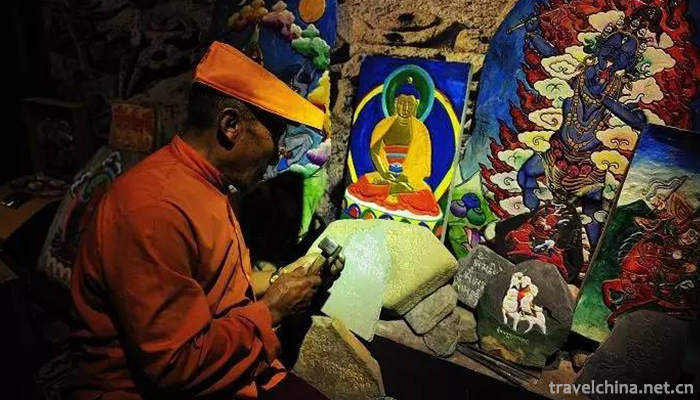
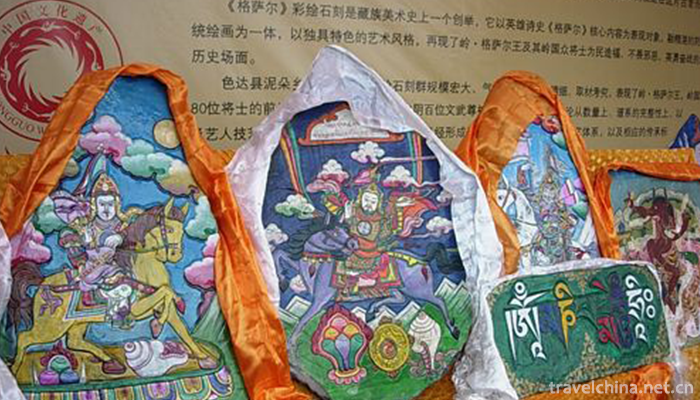
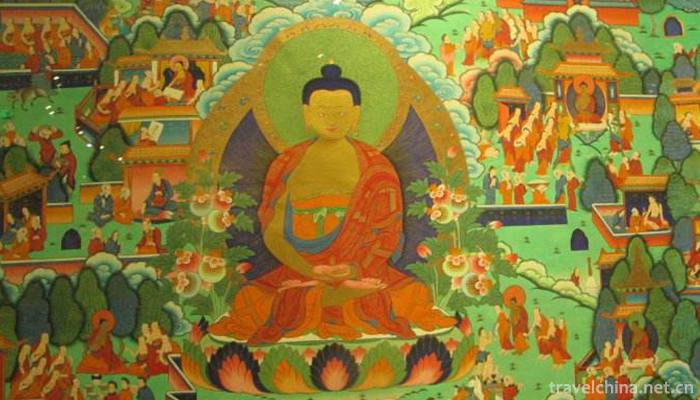
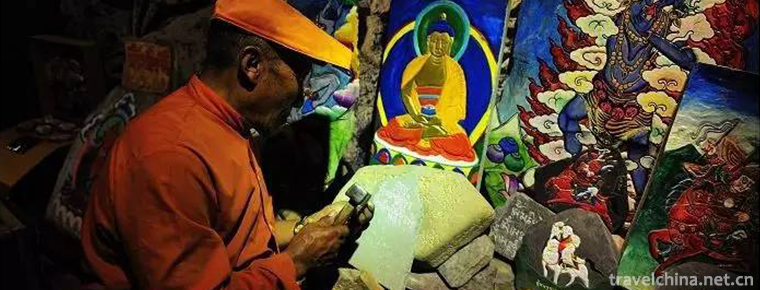
Tibetan Gesar Painted Stone Carvings
-
Mupa Mipa
Mupa Mipa, a local traditional folk literature in Simao City, Yunnan Province, is one of the national intangible cultural heritage.
Views: 376 Time 2018-12-15 -
Xianguding Scenic Spot
Xianguding, located in the south of Huancui District, Weihai City, is only five kilometers away from the city centre. It is the highest peak in the Northwest Mountain of Wangdao, with an elevation of
Views: 142 Time 2018-12-22 -
Chaya Mountain Scenic Spot
Views: 203 Time 2019-01-04 -
Checkerboard Mesa Qipanshan Mountain
Qipanshan is located in the northeast of Shenyang City, adjacent to Fushun in the east, Hunhe in the west, Tieling in the South and Hadaling in the north. It is located
Views: 250 Time 2019-02-07 -
Boiled yellow croaker
Boiled yellow croaker is a traditional dish with Shandong characteristics. It belongs to Shandong cuisine. Its main ingredient is yellow croaker. It is a dish with soft meat, rotten but not spoiled, a
Views: 212 Time 2019-03-24 -
Two strands
Erguxian is an ancient traditional opera, which was formed in Song Dynasty and has a history of more than 500 years. The two-strand string is evolved from folk minor,
Views: 299 Time 2019-04-28 -
Drama Costume and Opera Production Skills
Drama costume and costume production skills, local traditional handicraft in Suzhou City, Jiangsu Province, one of the national intangible cultural heritage.
Views: 154 Time 2019-05-08 -
Legend of Cowherd and Weaver Girl
Niulang and Zhinu are one of the four Chinese folk love legends (the other three are Legends of White Snake, Meng Jiangnu Crying Great Wall, Liang Shanbo and Zhu Yingtai). They derive from the star na
Views: 347 Time 2019-06-08 -
Legend of Kirin
The legend of Kirin is mainly spread in Jiaxiang County of Shandong Province and its surrounding areas. Kirin is an auspicious God and animal in ancient legends. Ancient books say
Views: 166 Time 2019-06-10 -
Month also
Dong people's "moon" means collective visiting, which is a social custom in Dong village. The young men and women in one village of the Dong nationality visit another village according to th
Views: 356 Time 2019-07-16 -
A city with a fire by one Cold thinking behind Ding Zhen hot
With the popularity of microblogging for nearly seven months, the popularity of microblogging has been created for a long time. At the same time, the hometown of Ding Zhen, Litang County, Ganzi Tibetan Autonomous Prefecture, also ushered in several times the search volume and real gold and silver tourism orders.
Views: 99 Time 2020-12-07 -
Suining social security
By the end of 2019, there were 23400 registered unemployed people in Suining, with the registered unemployment rate of 3.62%. 855000 people participated in the basic endowment insurance for urban employees, an increase of 114800 over the end of last year.
Views: 149 Time 2020-12-16
